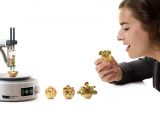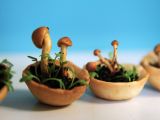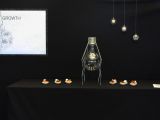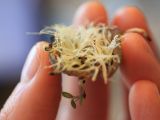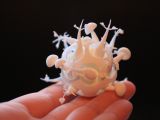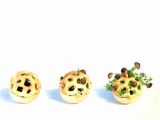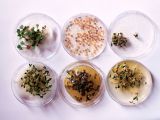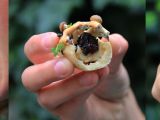We've heard about 3D printed food before, but for the most part, those inventions revolved around reproducing things that already existed, instead of making something new, something that could actually set the food apart.
You probably came upon at least some mention of a food 3D printer that can make pizzas, or give gruel / puree some sort of shape.
However, a 3D printer, or 3D printing project, specifically intended to make distinctive treats hadn't been developed until now.
Fortunately, we have Dutch designer Chloé Rutzerveld on our side. She has created the Edible Growth project.
The Edible Growth Project
In a nutshell, the project relies on a custom-modified 3D printer to make food from several ingredients, including edible plants that seem to literally grow from them. It's like eating muffins with little mushroom sprouting out, or cookies decorated with parsley, of all things.
You might think they're bizarre ideas, but if you've ever attended a media reception at IFA, CES or Computex, or any other occasion really, then you might have second thoughts.
At those get-togethers prior to product releases, you get served tiny morsels of different foodstuffs that usually taste a lot different from what you're used to. They also tend to look very unique.
Having attended a no small number of such occasions ourselves (IFA 2014 being the most recent), we can confidently say that Edible Growth self-contained morsels of food would fit right in. Indeed, they may even become the star attractions if they end up tasting as good as they look.
Then there's the advantage of Edible Growth being focused on allowing the morsels to “grow” into their shapes from healthy ingredients, instead of mixing together fast foods.
Examples of 3D printed Edible Growth
You can make biscuits with a base matrix from dried fruits or vegetables, or maybe gelatinous paste called Agar Agar (made of algae). Nuts can be used as well. The matrix is then infused with yeast, bacteria, fungi, seeds or sprouts. Since the micro-organisms are live cultures they alter both the texture and the flavor of the matrix over time, even giving it probiotic effects.
Basically, Chloé Rutzerveld has created a process through which the food morsel acts a lot like a potted plant. The live cultures use the matrix as a soil in order to sprout and eventually give the biscuits a unique texture and flavor, as we said.
The only downside is that it takes about five days for the morsels to become ready to eat, instead of half an hour or less. The process is also not quite safe either, from a health perspective, especially in the fermenting process. Still, it's only a matter of time.
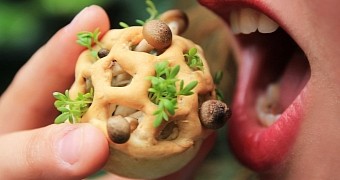
 14 DAY TRIAL //
14 DAY TRIAL // 
